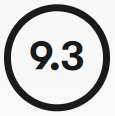After discovering King Crimson many years ago and absorbing all their first phase albums -
In The Court Of The Crimson King (1968) through to
Red (1974), I then spent some months looking for equivalents. As I described in
log #73 the search wasn't fruitful, King Crimson were pretty unique, both in their original prog form, and then in their reinvention in the 80s, but I did discover some new bands along the way.
Fast forward 40 years: Original prog behemoths King Crimson and Yes are still touring in some form or another, and Steve Hackett plays pre 1977 Genesis exclusively at his concerts. There are also a number of new bands still keeping the prog and mellotron sound alive, like local boys Servants Of Science or the recently reviewed
HOGIA. And not a million miles away from prog came the "post rock" movement, and in particular the instrumental power band like Explosions In The Sky, Mogwai or
GY!BE.
But exclusive instrumental music in the rock format is not something I've ever been able to get into (it's fine with ambient music as it's the whole point) but in rock music I do miss the singing. It wasn't the main thing with a band like King Crimson where there were obviously lengthy prog instrumentals and unconventional song structures but Greg Lake's and John Wetton's vocals added to the atmosphere.
Enter the forbiddingly named Morte Macabre - a collaboration of Swedish musicians from prog rock bands Anekdoten and Landberk, playing instrumentals, and not just any old instrumentals, but soundtracks from 1970s Italian movies known as Giallo.
I've never heard of Giallo before but sort of recognised it after reading about it. The term refers to a particular Italian thriller-horror genre of film (or literature) that has mystery, crime or psychological thriller elements. In particular the films can sometimes be described as slasher movies and often exploit young attractive female actresses who are the victims of brutal murders (but are sometimes the perps too).
The archetypal giallo plot involves a mysterious, black-gloved psychopathic killer who stalks and butchers a series of beautiful women.
Anne Billson
Giallo in Italian literally means yellow based on the colour of the genre's paperback books.
The thing is I first played the album having no idea about this. Only after I learned the band were covering themes from vintage horror movies did the music make sense. For instance on hearing
Lullaby (and not consciously recognising it) it did remind me of a 60s French movie. Hats off to the band who engendered that response in me
before I even knew this track was in fact a version of the theme from
Rosemary's Baby. Furthermore my daughter on overhearing the track commented that it was very scary (and could I turn it off?). It was one of the few 18 rated films I allowed her to view underage (it's that good).
Rosemary's Baby is indeed a fantastically tense film of paranoia which, like much of the music, builds to a terrifying conclusion. However, although not from the Giallo stable, the imagery of this album (including the cover) takes me again to Kurt Russell's
The Devils (not the first time a piece of music on this blog has
led me there).
Ironically, after my comments about instrumental rock music, in fact the least likeable aspect of this album for me is the choral female singing which begins the album subtly in the prog heavy King Crimsonesque
Apoteosi Del Mistero but is used liberally on several other tracks reaching it's zenith on
Lullaby. The singing sounds peculiarly similar to the mellotron itself famous for it's slightly off key tape mechanism.
It's not just the mellotron though. The album, with it's heavy guitar, doom laden bass and Bill Bruford style rim taps and damped cymbals, reminds me most of the late period of the first incarnation of Crimson - like an entirely instrumental
Red. In particular the monumental last track which builds like
Starless, the Crimson's greatest piece.
There are moments to enjoy before this finale. Tracks two and three merge. There is a slow build up into a powerful guitar and bass riff, again overlaid with mellotron. There is also a psychedelic middle section which sounds just like the violin sawings of
Larks Tongue era Crimson or the sort of music Pink Floyd were coming out with at the turn of the 60s/70s.
There are a couple of quiet guitar led pieces which are almost classical in their construction: the very gentle
Quiet Drops and a jazzy
The Photosessions. The latter in particular is a fabulous piece with a beautiful jazzy guitar melody over the sound of waves crashing ashore. There's a similar track by the long time forgotten Brit/German prog band Nektar called
Desolation Valley.
Lovely stuff, but nothing could prepare me for the final monster title track
Symphonic Holocaust. Like the album as a whole, there is less of the pyrotechnics of an ELP or Yes, but huge dollops of brooding menacing dark atmosphere.




























